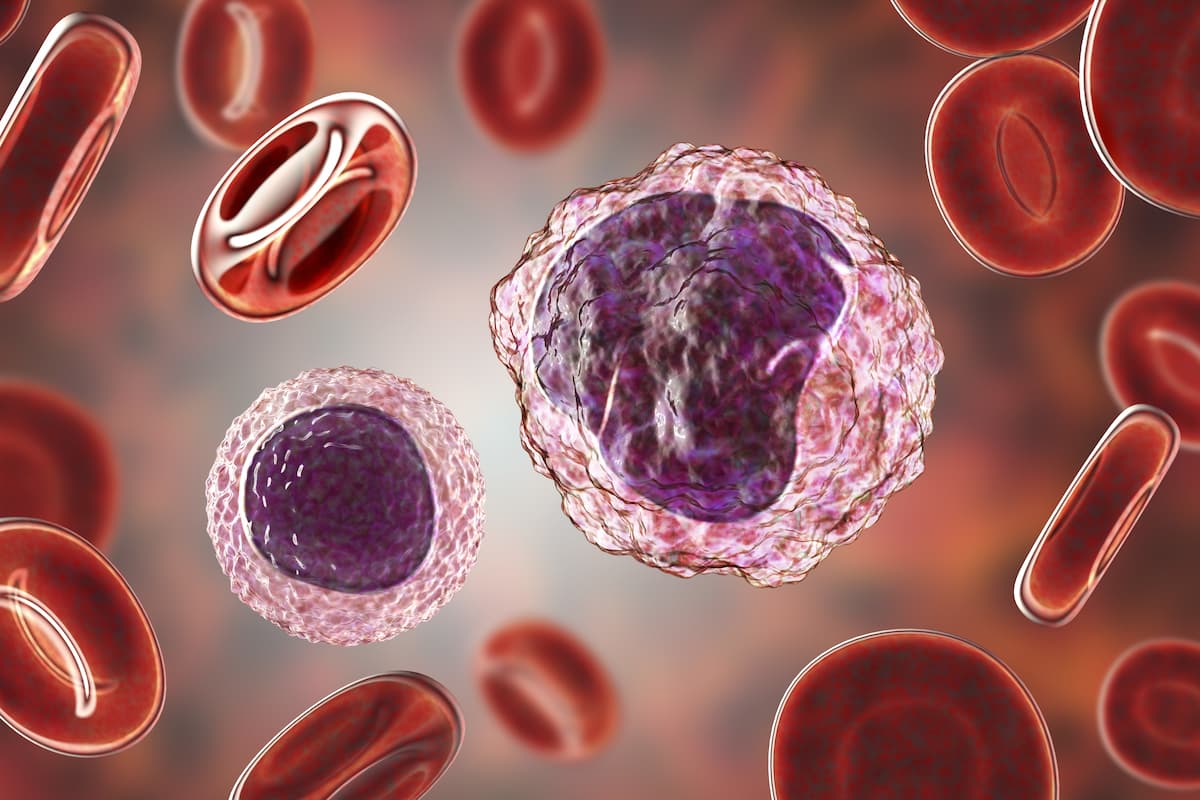Pembrolizumab/CAR T Therapy Shows Manageable Safety Profile in R/R DLBCL
The addition of pembrolizumab to tisagenlecleucel also appears to yield inconclusive efficacy signals and did not augment cellular expansion among patients with diffuse large B-cell lymphoma in a phase 1b study.
“[These] limited data suggest that the combination of tisagenlecleucel and pembrolizumab was feasible and showed a manageable safety profile, with no dose-limiting toxicities or significant exacerbation of tisagenlecleucel-related AEs," according to the authors of the phase 1b PORTIA study (NCT03630159).

A regimen consisting of tisagenlecleucel (Kymriah) plus pembrolizumab (Keytruda) had a manageable safety profile and feasibility among pretreated patients with relapsed/refractory diffuse large B-cell lymphoma (DLBCL), according to results from the final analysis of the phase 1b PORTIA study (NCT03630159).
All patients experienced adverse effects (AEs), with treatment-related serious AEs affecting 2 patients (16.7%), including 1 instance each of febrile neutropenia and cytokine release syndrome (CRS). No AE-related discontinuations or dose-limiting toxicities were reported.
Seven patients experienced at least 1 CRS event, including a single patient who experienced an instance of grade 3 CRS. Regarding this toxicity, the median time from infusion to onset was 2 days. Admission to an intensive care unit was necessary in 2 patients, with a median duration of 4 days. CRS-related organ toxicities affected 2 patients, and 4 patients required systemic anticytokine therapy. Grade 2 immune effector cell–associated neurotoxicity syndrome (ICANS) affected 1 patient; there were no instances of grade 3 or higher ICANS.
In the 30 days following infusion, no deaths occurred. However, 5 of 12 patients died as a result of progressive disease after this 30-day period.
In terms of efficacy, the complete response (CR) rate was 33.3%, the partial response (PR) rate was 16.7%, and the overall response rate (ORR) was 50.0% (95% CI, 21.0%-78.9%). Half of the population had progressive disease. The D-1 cohort, consisting of patients who received pembrolizumab 1 day before their tisagenlecleucel infusion, had an ORR of 75.0% (95% CI, 19.4%-99.3%), including 3 sustained CRs. Moreover, 1 patient (25.00%; 95% CI, 0.63%-80.59%) in the D8 cohort, who received the immunotherapy agent on day 8 post-infusion, experienced a CR, and 2 (50%; 95% CI, 6.76%-93.24%) in the D15 cohort, who received pembrolizumab on day 15 post-infusion, experienced a PR.
“Tisagenlecleucel demonstrated high response rates and a manageable safety profile in adults with relapsed/refractory DLBCL in the [phase 2] JULIET trial [NCT02445248]. However, lack of response and CAR T-cell exhaustion were observed in patients with PD-1 overexpression. Hence, pembrolizumab, a PD-1 inhibitor, was hypothesized to improve efficacy and cellular expansion of CAR T-cells in vivo,” the investigators wrote.
“[These] limited data suggest that the combination of tisagenlecleucel and pembrolizumab was feasible and showed a manageable safety profile, with no dose-limiting toxicities or significant exacerbation of tisagenlecleucel-related AEs. [However], pembrolizumab did not augment tisagenlecleucel expansion.”
Investigators of the multicenter, open-label phase 1b PORTIA trial enrolled 15 patients, of whom 12 received the study treatment and were therefore included in the final analysis. In total, 3 patients received 6 complete cycles of pembrolizumab—2 in the D15 cohort and 1 in the D-1 cohort. Discontinuations due to progressive disease were reported in 33.3% of patients, with 13.3% of patients discontinuing due to AEs and 13.3% due to patient decision. The median follow-up time from tisagenlecleucel infusion was 230 days.
The pembrolizumab treatment consisted of no more than 6 intravenous doses of 200 mg each. Patients received a dose every 3 weeks until disease progression or unacceptable toxicity.
The primary end point was frequency of dose-limiting toxicities in the 21 days following the first infusion of pembrolizumab. Secondary end points included safety, ORR, progression-free survival, duration of response, cellular kinetics, and immunogenicity.
According to the investigators, this study was terminated prior to dose expansion “based on thorough data analysis from the dose timing selection part and in consideration of other therapies with similar efficacies.”
Reference
Jaeger U, Worel N, McGuirk JP, et al. Safety and efficacy of tisagenlecleucel plus pembrolizumab in patients with r/r DLBCL: phase 1b PORTIA study results. Blood Adv. 2023;7(11):2283-2286. doi:10.1182/bloodadvances.2022007779
Highlighting Insights From the Marginal Zone Lymphoma Workshop
Clinicians outline the significance of the MZL Workshop, where a gathering of international experts in the field discussed updates in the disease state.